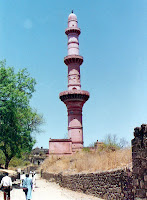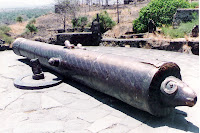
The permanent residence of Lord Vishnu
In every big city of India, you will come across advertisements of exhibition cum sale of pearls and other semi precious stones.
In these exhibitions, you will also see rudrakshas, shaligrams and similar objects.
In 1988, almost two decades ago, I visited an exhibition cum sale of pearls in Chennai.
The exhibitor showed me his ware.Statuettes made of crystal; fresh water pearl necklaces; rudrakshas; shaligrams; tulsi malas, etc.
He showed me one shaligram which he said was worth at least 2.5 million Indian Rupees (65,000 U.S. $).
He said he would not sell it at any price because it would bring him good luck and much more furtune.
He later sent me three shaligrams.
At time, I wrote a small article “The sacred Shaligram” in the Hindu.
I got numerous letters.
Some accused me of not knowing anything about shaligrams.
Some wanted me to recommend a good dealer.
My boss read my article and summoned me.
He asked me whether it was true that I was going to accept gift of shaligrams.
I told him I love small gifts and would gladly accept them.
He became very serious.
He said don’t take them unless you can observe the daily rituals strictly.
Otherwise, you would have bad luck.
Although this trait sometimes does create problems, by nature I am very obstinate.
Finally, he made me promise that if I suffered any mishap within a week of getting the shaligrams , I would send them to some nearby temple.
The shaligrams did not affect me in any way.
And they remain with me to this day.
Lord Vishnu has taken good care of himself.
What are Shaligrams
According to Hindu religion, God does not reside in any statue.
When we start pooja (worship) of any God (or Goddess), we first have to request that God to enter his statue and remain present for the duration of the pooja.
This is called ‘awahan’ (summon).
After the pooja is over, we have to do ‘visarjan’ (farewell) - request God to go back to wherever he came from.
But shaligram is a special stone in which Lord Vishnu is ever present.
So we have to take extreme care.
Bathe him.
Feed him at regular hours. And perform all the rituals strictly, otherwise…… he may become angry.
Why Vishnu remains in the shaligram?
According to one legend, Vishnu had two wives - Laxmi and Sarswati.
According to one legend, Vishnu had two wives - Laxmi and Sarswati.
Ladies will always be ladies!
Once the two wives had a big fight.
In a fit of rage, Laxmi cast a curse on Sarswati.
She would have to go down to the earth and live there forever.
Sarswati cried and cried.
When Vishnu came, he told Sarswati not to cry.
He would tay with her on earth.
So Sarswati came down to the earth in the form of Tulsi (Holy Basil) plant and Vishnu came down in the form of shaligram.
Tulsi and shaligram are therefore worshipped together.
According to another legend, Gandaki, a lady devotee, performed sever penance for a long time. She asked for and got a boon from Vishnu, that he would reside in her womb (in her depths) as her own offspring.
What scientists say
According to scientists, shaligrams are fossils of Ammonite - an invertebrate which lived in the Tethys sea which existed between India and the Asian mainland.
There were about a thousand different varieties of ammonites.
Some were coiled.
Other were straight.
All are now extinct.
Their closest surviving ancestor is the pearly nautilus.
As India moved northwards - some 9000 kilometres in 250 million years - the Himalayas were formed.
A number of rivers formed and flowed down from the Himalayas into the Indo Gangetic plain. The shaligram was found in plenty in the Gandaki river.
The photograph of the shaligram here is probably a Perispyinctes of the Jurassic period - about 150 million years old.
Conclusion
Shaligrams are not supposed to be purchased and sold.
They are prized possessions in many Hindu families and are handed down from generation to generation.
The main statues in a few ancient temples are made of shaligram.
What is worshipped is the shaligram stone which has a whorl or chakra.
The one in my photo has a perfect chakra.
And you can also clearly see a serpents hood.
I met the owner again in 2005.
He invited me to inaugurate his new show room in Chennai.
He had indeed accumulated wealth.
The Jagannath Temple, dedicated to Vishnu, in Puri (Orissa) has the largest and heaviest shaligram in India.
The ISKCON temple in Scotland, called ‘Karuna Bhavan’, has the largest number of shaligrams outside India.
So far my own shaligrams are concerned, they have given me no reason what so ever to whimper or complain.
They have indeed kept me happy and content all these years.













































